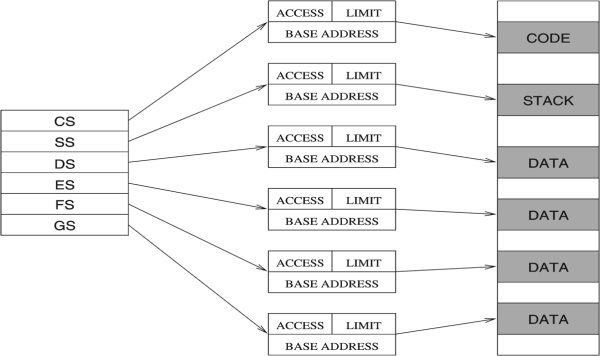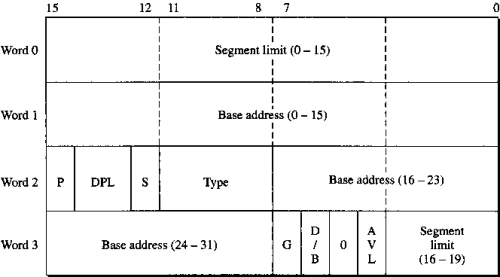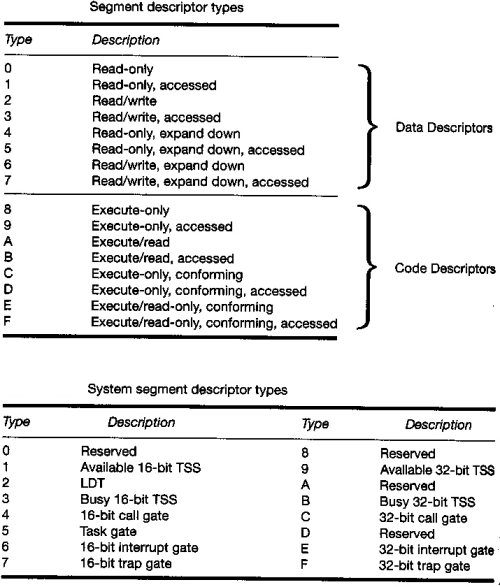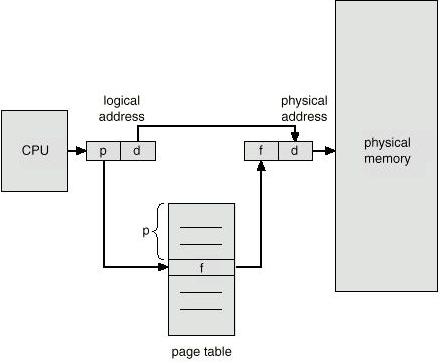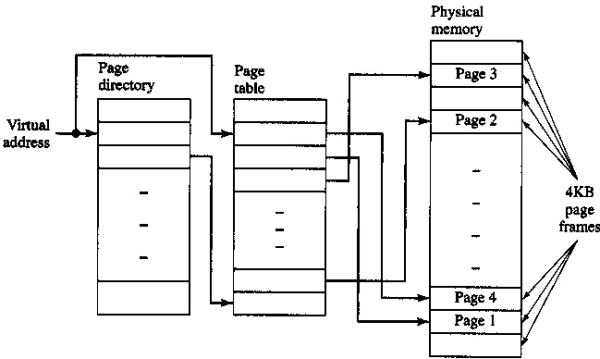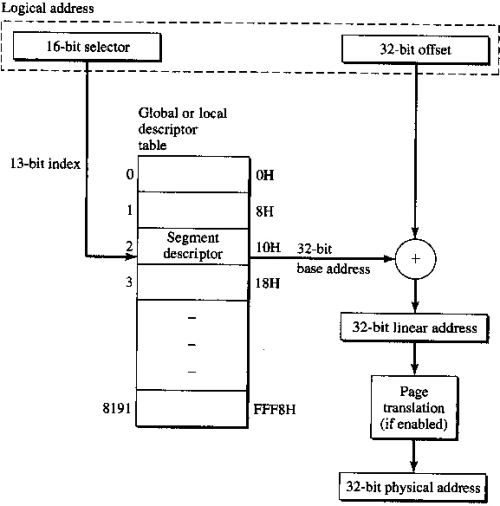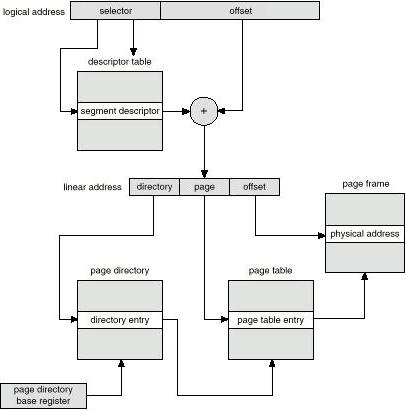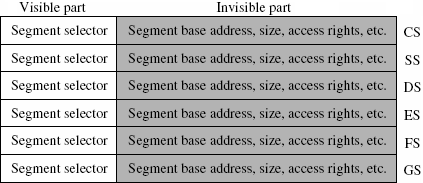-
Segment Registers in Protected Mode separate different blocks of code and data to protect them from undesirable interactions.
-
CS (Code Segment) contains processor instructions and their immediate operands.
-
DS (Data Segment) normally contains data allocated by the program.
-
SS (Stack Segment) contains the program stack for use by PUSH, POP, CALL, and RET.
-
ES (Extra Segment) references secondary data segment. Used by string instructions.
-
FS, GS provide extra segments on 80386/486/Pentium.
-
The six segments of the memory system:
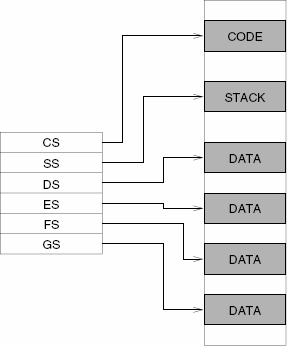
Segmented architecture is an important part of Linux and Windows memory-protection schemes.

